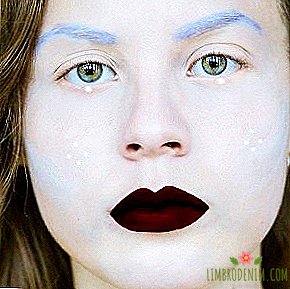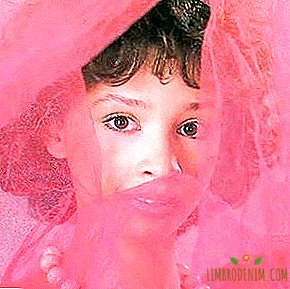Gosha Rubchinskiy: Why "there" love him more than "here"
"My name is Kirill Andreevich Krasnov. I am 22 years old. I was born and raised in the city of Kaliningrad, aka Königsberg. For over ten years in graffiti, seven years of swimming, I enjoy climbing. I strive to go my own way, to live an interesting life filled with love and travel ", - it was with this pre-recorded speech that the fall-winter show of the next year started with the Gosha Rubchinskiy brand. Kirill Andreyevich is one of the ordinary guys who managed to get on January 12 as a model. The design team, with the help of the Lumpen agency, was looking for people like Kirill across the country.
The show was held on January 12 in the building of the Kaliningrad Regional Youth Culture Center. Here symmetry is immediately apparent. Gosh Rubchinsky has been successfully broadcasting this very culture of Russian youth to the whole world for many years now. The world is reciprocating with him: for a couple of years Rubchinsky and his team secured the patronage of the giant Comme des Garçons, a contract with adidas, participation in international fashion weeks and constant, more often - admiring, attention of the Western press. At the same time, in the homeland, the success of the domestic brand still causes many waryness and bewilderment to many. And the designer himself, let's be honest, deliberately or not keep his distance: the Russian-language press often ignores and strongly emphasizes its cosmopolitanism. This time - quite literally, choosing as a venue one of the most western cities in the country.
In just a few years, everything that Gosh and his team put their hands into has become the object of close attention.
The show was held in the midst of men's fashion weeks - on the same day as the Pitti Uomo trade show in Florence. Despite possible problems with flights and visas, a whole foreign delegation of advanced media representatives on fashion came to him, including Alexander Fury, critic and fashion correspondent at T Magazine, Alec Leach, fashion editor of Highsnobiety, Vikram Kansar, editor of Business of Fashion, as well as buyers level Slam Jam and Smets. "It was the strangest first impression-conflict: you are in the foyer of the DKM, where you last went to the New Year tree or to the cat show as a child, and suddenly everyone speaks English," says Dmitry Selin, curator of the project "Art -Gates ", one of several locals caught in the show.
Over the course of several years, everything that Gosh and his team put their hands into has turned into an object of close attention. Over the past year alone, there have been several major news events: the release of the first perfume, participation in Pitti Uomo, the launch of the Dawn clothing brand. Each of them was somehow covered in the foreign press, and this show is another opportunity to understand how the designer managed to win over the Western audience and keep the interest. Why did the Gosha Rubchinsky phenomenon grow to such an extent that all these people preferred to show a Russian designer in a small city to everything else? There are several reasons for this.
The ability to cooperate - with institutions and people, to find "their", able to understand and complement you - the unconditional talent of the designer. So, it was not for the first time that Pavel Milakov, who began working with Rubchinsky as a graphic designer back in 2009, answered for all the music at the show. The same applies to the creative producers of the show - Alexandra Rozhkova and Sergey Kostromin, who were also responsible for the location. Several models have become a constant show - among them Tolya Titaev (not so long ago, they jointly launched the Dawn brand) and Valentin Fufayev. Rubchinsky created a real association, in which friends are also colleagues.
The same story - with the ability to choose the "right" partners for collaborations, and a vivid example of this is the recent contract with the sports brand adidas, which combines both the richest legacy and a fresh look at fashion. In recent years, all their third-party rulers have been on the ear, and the sensational Yeezy is only the tip of the iceberg. The current step is logical: a collection dedicated to the upcoming World Cup, as well as possible reflects the spirit of the times.
Of course, in the first place, the success of the Rubchinsky brand with a Western audience rests on the interest in unfamiliar aesthetics. She spoke clearly about the unknown experience with simple, convenient things. The designer makes an integral artistic statement - about youth and vulnerability, ostentatious courage and bravado, pushing, as always, from the culture of adolescents, their tastes and style. It is no coincidence that the monologues of ordinary guys from Rostov-on-Don and Ufa accompanied the show.
However, even this is not always the key to success, so rarely falling to the lot of Russian designers. If you look at the headings telling about new names in the fashion world, half of all the declared ones stop doing clothes in a few years. The matter is not in the Russian reality: it is very difficult to launch and work on the clothing brand. In order for everything not to collapse after the first influx of raptures, a million factors must coincide. The most important - the one from which many find themselves far away - a sound financial strategy and a commercial component. Rubchinsky was under the patronage of the Comme des Garçons - and this is his luck.
The ability to cooperate - with institutions and people, to find "their", able to understand and complement you - the unconditional talent of the designer
As for the “Russian life” of Gosha Rubchinsky, the collection, some of the things from which became a collaboration with adidas, is a mixture of various codes and references. The main one is images related to the near-football life - a fan, a policeman, a goalkeeper. Together with adidas, the designer showed sneakers, Cyrillic football shirts, sweatshirts, characteristic scarves and other things. Models from the joint line will be available in 133 stores around the world - including Dover Street Market and on sites directly owned by Comme des Garçons. In Russia, the collection will not appear in adidas, but in the concept stores where Gosha Rubchinsky was sold long before that: SVMoscow and Kuznetsky Most 20, Wood Wood and Au Pont Rouge. According to adidas, there are three collections planned. Of course, in Russia, the fame of the brand was accompanied not only by recognition, but also by the huge number of memes associated with the personality of the designer himself, and with his collections. The main claims of haters from social networks usually fit into the words "commerce", "ugliness" and "gopnichestvo."
Rubchinsky is not the first to try to pack a concentrated Russian legend in a modern way and seduce the world with it. After all, canonical "Russianness", endless quotations, right down to the literal style à la russe, have existed in a fashionable context since the very birth of the industry. And yet, lately, a Russian souvenir has ceased to be appreciated in places where a fresh statement is now required. It was Rubchinsky with his team who, for the first time in a long time, derived a fresh set of techniques and codes. Taking the style of the street, everyday, and not the front of the city uniform, they formed a basic wardrobe, on the basis of which both modern style and new silhouettes were born.
Such careful work with the actual context has become in demand in the world of conditional "there" and for the same reasons causes rejection of many "here." Each Rubchinsky's art project - whether it is a collection, photo project, book, or past show - is so recognizable for the Russian audience that it is simply not always ready to identify with it. A strict and balanced view of the surrounding reality may seem like blasphemy to someone, as if the designer, without any extra sentiment, is disassembling a grandfather's wardrobe into bedside tables, instead of once more covering it with varnish. But the artist has the right not to think about insulting feelings in the era of postmodernism.
Photo: Gosh Rubchinsky




